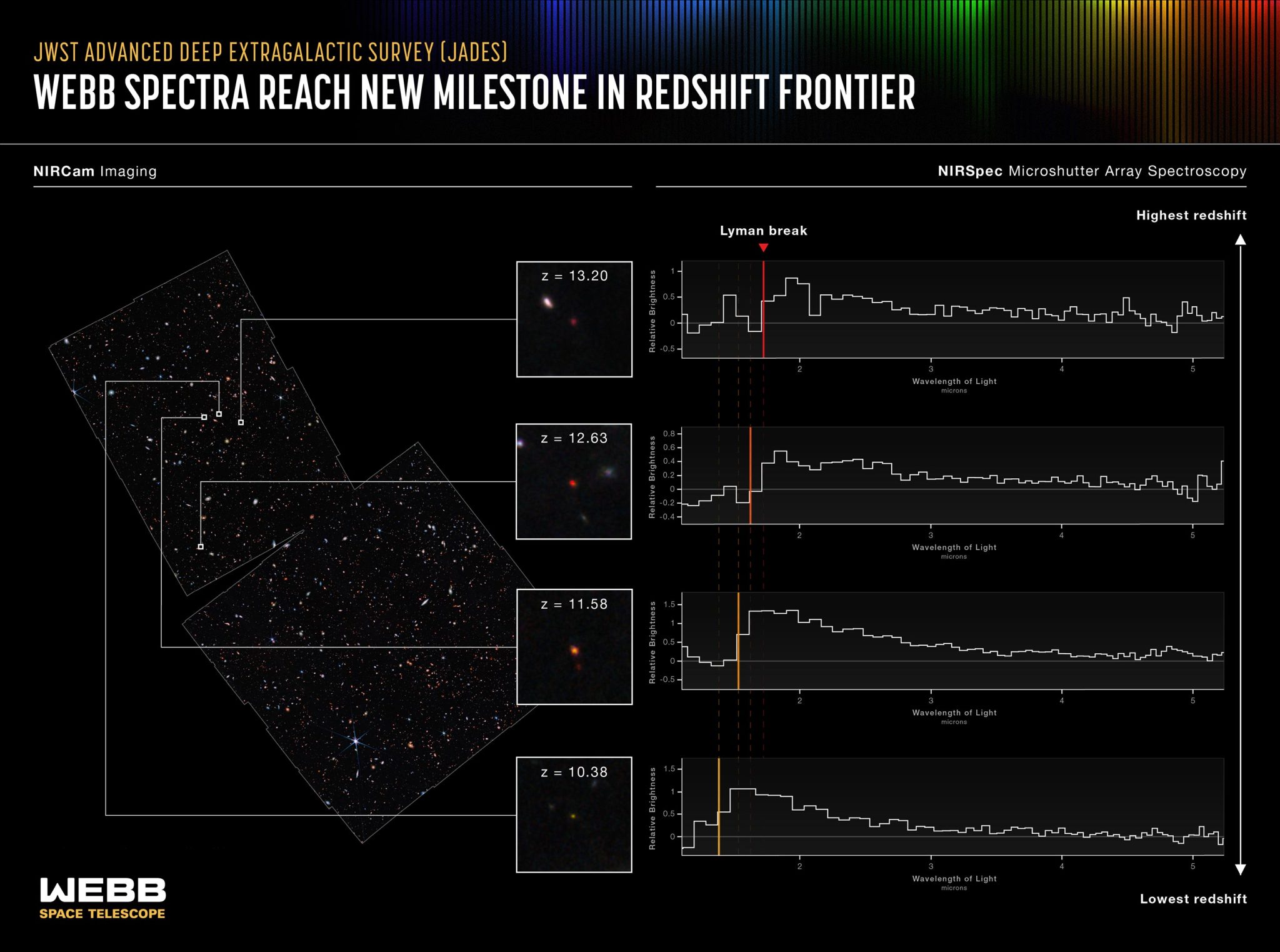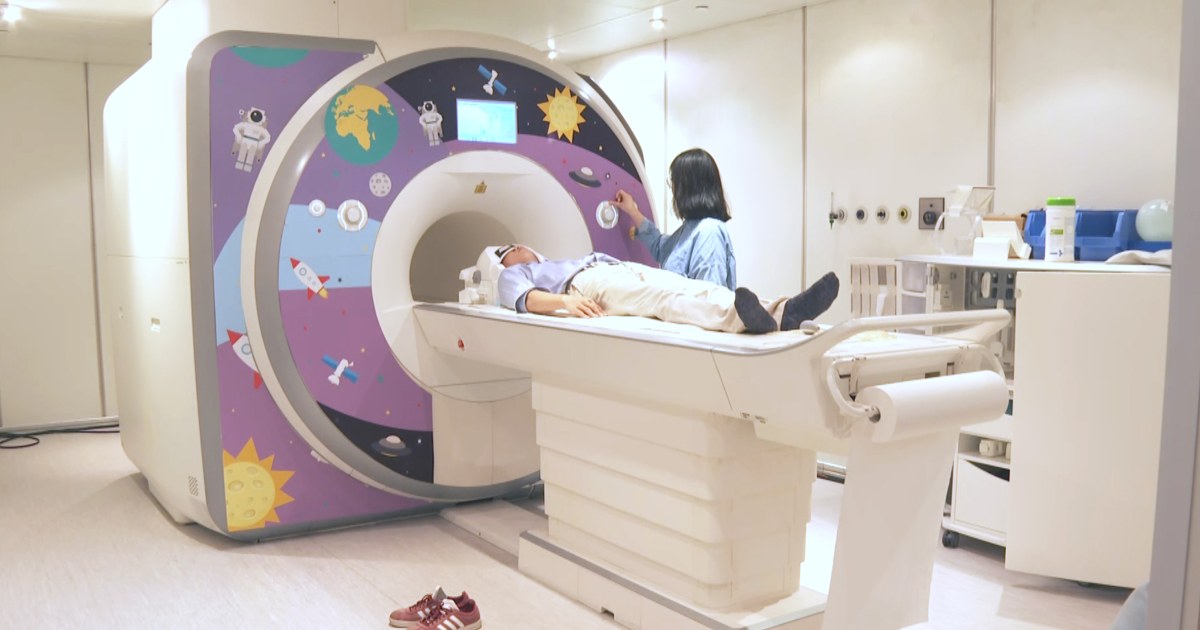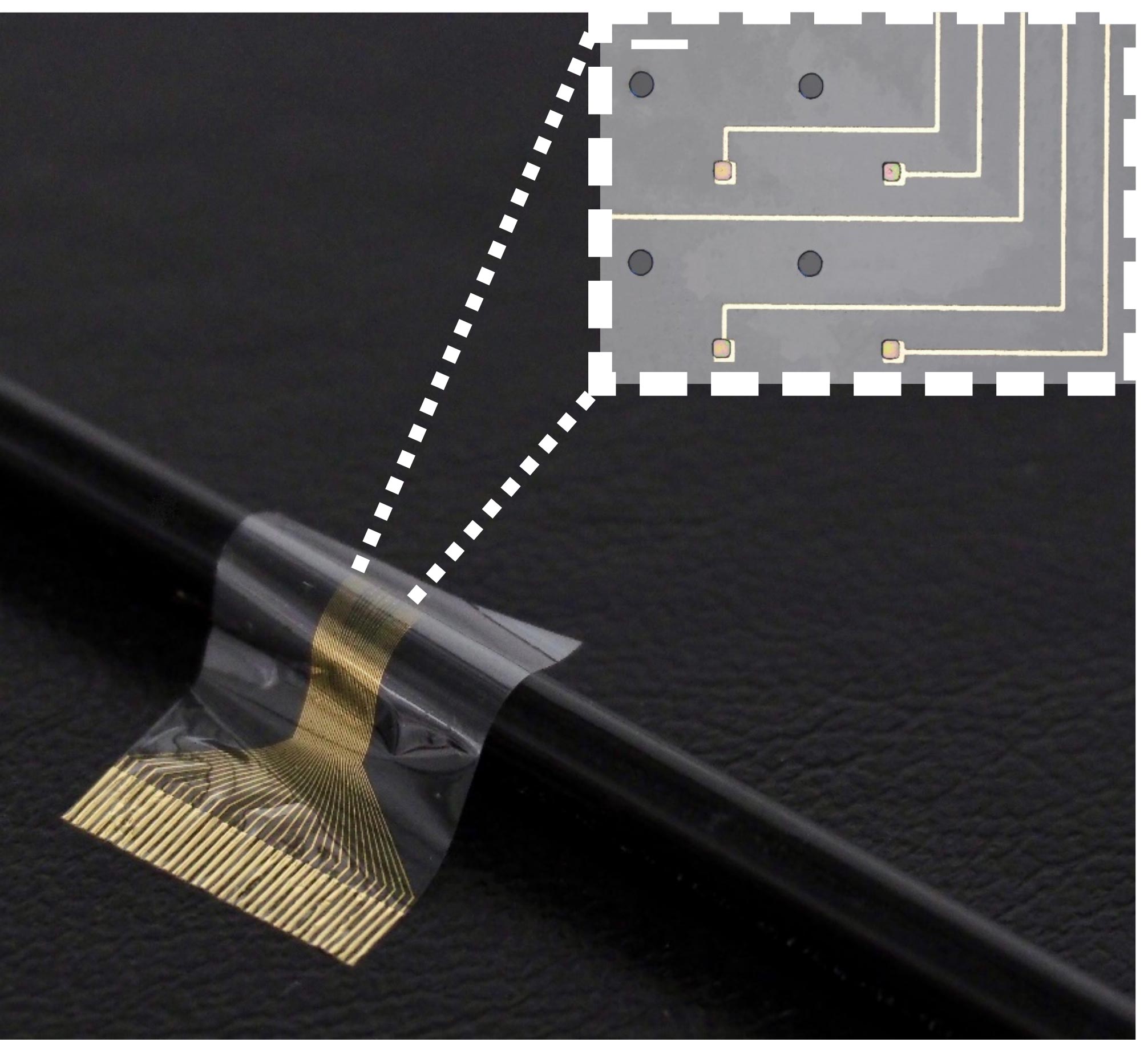Journey to the Edge of Time: James Webb Space Telescope Reveals Most Distant Galaxies
An international team of astronomers has discovered the earliest and most distant galaxies confirmed to date using data from the James Webb Space Telescope (JWST). The telescope captured light emitted by these galaxies more than 13.4 billion years ago, which means the galaxies date back to less than 400 million years after the Big Bang, when the universe was only 2% of its current age. ...
... Coauthor Sandro Tacchella from the University of Cambridge in the United Kingdom added, “It is hard to understand galaxies without understanding the initial periods of their development. Much as with humans, so much of what happens later depends on the impact of these early generations of stars. So many questions about galaxies have been waiting for the transformative opportunity of Webb, and we’re thrilled to be able to play a part in revealing this story.”
According to Robertson, star formation in these early galaxies would have begun about 100 million years earlier than the age at which they were observed, pushing the formation of the earliest stars back to around 225 million years after the Big Bang.
“We are seeing evidence of star formation about as early as we could expect based on our models of galaxy formation,” he said.

https://scitechdaily.com/journey-to-...tant-galaxies/
An international team of astronomers has discovered the earliest and most distant galaxies confirmed to date using data from the James Webb Space Telescope (JWST). The telescope captured light emitted by these galaxies more than 13.4 billion years ago, which means the galaxies date back to less than 400 million years after the Big Bang, when the universe was only 2% of its current age. ...
... Coauthor Sandro Tacchella from the University of Cambridge in the United Kingdom added, “It is hard to understand galaxies without understanding the initial periods of their development. Much as with humans, so much of what happens later depends on the impact of these early generations of stars. So many questions about galaxies have been waiting for the transformative opportunity of Webb, and we’re thrilled to be able to play a part in revealing this story.”
According to Robertson, star formation in these early galaxies would have begun about 100 million years earlier than the age at which they were observed, pushing the formation of the earliest stars back to around 225 million years after the Big Bang.
“We are seeing evidence of star formation about as early as we could expect based on our models of galaxy formation,” he said.

https://scitechdaily.com/journey-to-...tant-galaxies/
Unraveling the Secrets of an Invisible Galaxy
A mysterious and very distant object, in a universe as it was ‘just’ two billion years after the Big Bang, that hides from even the most advanced instruments. Its features have finally been described by a SISSA study published in The Astrophysical Journal.
An extremely remote celestial body in a still young Universe, one-sixth the size of the present one. An object so dark that it is almost invisible, even to highly sophisticated instruments. Its nature has long been the subject of debate, but by means of surveys made with the ALMA interferometer, the SISSA research group led by Prof. Andrea Lapi that conducts research into the formation and evolution of galaxies has finally succeeded in identifying its main properties. Compact, and containing large quantities of interstellar dust, it is a young galaxy, forming stars at about 1000 times the rate of the Milky Way. The description of this galaxy will be useful for revealing more about this very distant object and indicating new approaches for the study of other ‘dark’ celestial bodies. The research just published in The Astrophysical Journal will also provide new insights for developing advanced models of galaxy formation and evolution.
BELOW: mage of the lensed galaxy acquired with the ALMA interferometer

https://scitechdaily.com/dark-myster...isible-galaxy/
A mysterious and very distant object, in a universe as it was ‘just’ two billion years after the Big Bang, that hides from even the most advanced instruments. Its features have finally been described by a SISSA study published in The Astrophysical Journal.
An extremely remote celestial body in a still young Universe, one-sixth the size of the present one. An object so dark that it is almost invisible, even to highly sophisticated instruments. Its nature has long been the subject of debate, but by means of surveys made with the ALMA interferometer, the SISSA research group led by Prof. Andrea Lapi that conducts research into the formation and evolution of galaxies has finally succeeded in identifying its main properties. Compact, and containing large quantities of interstellar dust, it is a young galaxy, forming stars at about 1000 times the rate of the Milky Way. The description of this galaxy will be useful for revealing more about this very distant object and indicating new approaches for the study of other ‘dark’ celestial bodies. The research just published in The Astrophysical Journal will also provide new insights for developing advanced models of galaxy formation and evolution.
BELOW: mage of the lensed galaxy acquired with the ALMA interferometer

https://scitechdaily.com/dark-myster...isible-galaxy/
stlah



 )
)







Leave a comment: